Wanted: A few reasonable people to run for Congress
Must be willing to put up with toxic dysfunction, constant threats of violence, tireless fundraising, long travel. American needs you.
We’re now in congressional retirement announcement season, that most uncertain and liminal time of the two-year election cycle. When incumbent members of Congress must decide whether to stand for re-election again, or do something else. Anything else. Just get me out of here.
It’s a bad sign for Congress that so many institutionalist-minded members are calling it quits — in what should be the prime of their congressional careers.
But can you really blame them?
“The last few years have been among the most difficult and frustrating times in my professional career with a chaotic House. It’s hard to erase that experience from one’s mind in making this decision.” (That’s Dan Kildee, a Democrat from Michigan)
“This is a bad patch—but it’s the start of a bad patch, not the end of it.” (That’s Brian Higgins, a Democrat from upstate New York)
GOP Rep Garrett Graves offered this stinging comment on the retirements: “This place, right now, I think it’s childish. I mean, this isn’t a place where you attract the cream of the crop,”
Ooof.
Problem is, Congress is still going to be around, regardless of the Glassdoor reviews. It’s in the Constitution and it’s a pretty important institution. It allocates trillions of tax dollars and writes the laws for the country.
America needs a Congress that reflects the diversity and talents of the nation.

But Rep. Graves is right. Congress isn’t always attracting the cream of the crop. The sharpest pencils in the box. The brightest oranges in the crate. The most reliable clocks in the watchmaker’s store…
This toxic environment has been driving lawmakers (and would-be lawmakers) away for at least a decade.
Back in January 2018, I wrote about the problem of retirements. My pithy subhead explanation captured it well: It’s a miserable job, and campaigning for it is awful.
Re-reading my six-year-old piece, I’m reminded of my semi-optimistic conclusion: “Historically, when enough individual members have found Congress a miserable place to serve, they’ve eventually supported reforms that make serving in Congress more meaningful work.”
Eventually. Change has to come. Eventually. And if we want to see the governing glass half full, I’ll also note that historically, institutional change to Congress comes soon after many new members arrive in Washington. First-year members are open-minded and not committed to the old ways.
But what kind of changes? Well, that depends on who shows up, and what that they expect Congress to do. And therein lies the problem…
Retirements go in waves. But the current era is distinct.
Let’s start out with some data. Thanks to the treasure that is the Brookings Vital Statistics on Congress, we have retirement data going back to 1930.
The basic trend looks like this:
Retirements are pretty steady from 1930 through 1970. Then in the 1970s, we see the first wave of retirements amidst a realigning political climate. The next wave of retirements happens in the early 1990s. Major redistricting in 1992 costs many incumbent members their safe districts and put them into newly competitive ones. But, as a New York Times analysis from 1994 concluded, “Part of it, lawmakers say, is that serving in Congress is no longer much fun. The big decisions center not on how much to spend, but on how much to cut and whom to alienate. They are angry with a snide press that they believe feeds public hatred of politicians.”
The demand for fundraising was increasing. A generation drawn to politics in the 1960s was hitting retirement age.
Now we appear to be in another era of higher-than-normal retirements.
To be sure, some institutional turnover is healthy. Mandated term limits for Congress are silly, but some rotation in office is healthy. I’m coming around to age limits (a patriotic 76 could mark an appropriate retirement age). But better, let’s expand the size of the House (say to 585 members), to bring in some fresh blood, and then continue to expand it every decade, as the country continues to grow.
We see similar trends in average House member tenure. As with retirements, we see a turn towards newer members in the 1970s, and then again in the early 1990s, and then again over the past decade.
And here we can go back to the very beginning. During the 19th century, turnover was quite high. Being a member of Congress was not so much a career as a tour of duty for prominent state-level politicians. Abraham Lincoln, you may recall from your history books, was only a one-term member of Congress. He was not atypical in that respect.
By the early 20th century, being a representative was more of a career. The House began to “institutionalize” — in the sense that it developed more of a distinct internal culture, with a set of distinct rules and norms. The classic political science paper here is Nelson Polsby’s 1968 article, “The Institutionalization of the U.S. House of Representatives.”
Polsby documented how Congress had evolved from an amateur partisan free-for-all in the 19th century into a specialized, predictable, somewhat collegial institution by the 1960s, with clear leadership structures and predictable behavioral codes. In his phrasing (from another essay), Congress had become a “transformative legislature”, as opposed to an “arena” As he explained:
“At one end lie legislatures that possess the independent capacity, frequently exercised, to mold and transform proposals from whatever source into laws. The act of transformation is crucial because it postulates a significance to the internal structure of legislatures, to the internal division of labor, and to the policy preferences of various legislators. Accounting for legislative outputs means having to know not merely who proposed what to the legislature and how imperatively but also who processed what within the legislature, how enthusiastically— and how competently.”
A half century later, in 2018, the political scientists Jeffery A. Jenkins and Charles Stewart III found themselves reflecting on the “Deinstitutionalization (?) of the House of Representatives.”
“If we look at today’s gridlock and dysfunction through a Polsbian lens, we are prompted to consider the possibility that, first, the House is transitioning to arena status, and, second, it is also shedding itself of the institutional features that supported legislative transformation in the middle twentieth century.”
Yep. Congress ain’t what it used to be.
Take my seat in Congress — Please!
Enough grand theorizing (for now). Back to the real-time exodus. Why are so many members of Congress opting out?
Yeah, the dysfunction. That’s the big thing.
Here, for example, is a word cloud from a recent survey of 300 former members of Congress.. The current state of congress? You guessed it. One word tumbles out, over and over. The word is “dysfunctional.”
And the state of our politics? Yeah, not so great either….
What about the rest of the job?
Well, there’s also all that travel. Back and forth from the district to Washington, most weeks. A lot of time on the plane. A lot of time away from the family.
Then there’s the endless fundraising: The dialing for dollars, or the small-donor-targeted showmanship. Pick your poison.
And don’t forget the constant scrutiny from the media.
And increasingly, the threats to personal safety and family.
According to that same recent survey of former members, half of the ex-politicians said that they or their families were threatened while they were in office. A third mentioned that even their staff got threatened. For women, African-American, and Latino former members, the numbers are even worse. Roughly 70% of them reported threats against them or their families, and nearly half said their staff faced threats too.
The benefits?
The pay is okay. For most people, $174,000 (the current salary) is a pretty good yearly haul, for sure. But compare that to $200,000 for a first-year associate Biglaw salary (lawyer is the most common profession in Congress). A lawmaker turned lobbyist or “government relations consultant” could expect to make a lot more. So could most mid-career professionals with the same credentials as members of Congress. And remember, most members of Congress need two residences: one in Washington, DC, and one at home.
Sure, there are other rewards. It’s still a prestigious, high-status job, with tremendous power (in theory). But the prestige and status have declined in recent years.
The institutional power of Congress is also on the wane. Over the last several decades, individual members of Congress have ceded more and more power to party leadership, leaving fewer and fewer opportunities for meaningful participation outside of leadership. You may recognize this centralization from my previous edition of Undercurrent Events, in which I pondered alternatives to a too-powerful Speaker of the House.
And Congress itself has ceded more and more power to the executive branch over the same period. For more on this first branch own-goal activity, please refer to the excellent book I co-edited with Timothy LaPira and Kevin Kosar, Congress Overwhelmed: The Decline in Congressional Capacity and Prospects for Reform.
In 2014, Esquire Magazine interviewed 90 members of Congress about the terrible working conditions in Congress. The piece ran under the headline: "Help, We're in a Living Hell and Don't Know How to Get Out.” The piece holds up well.
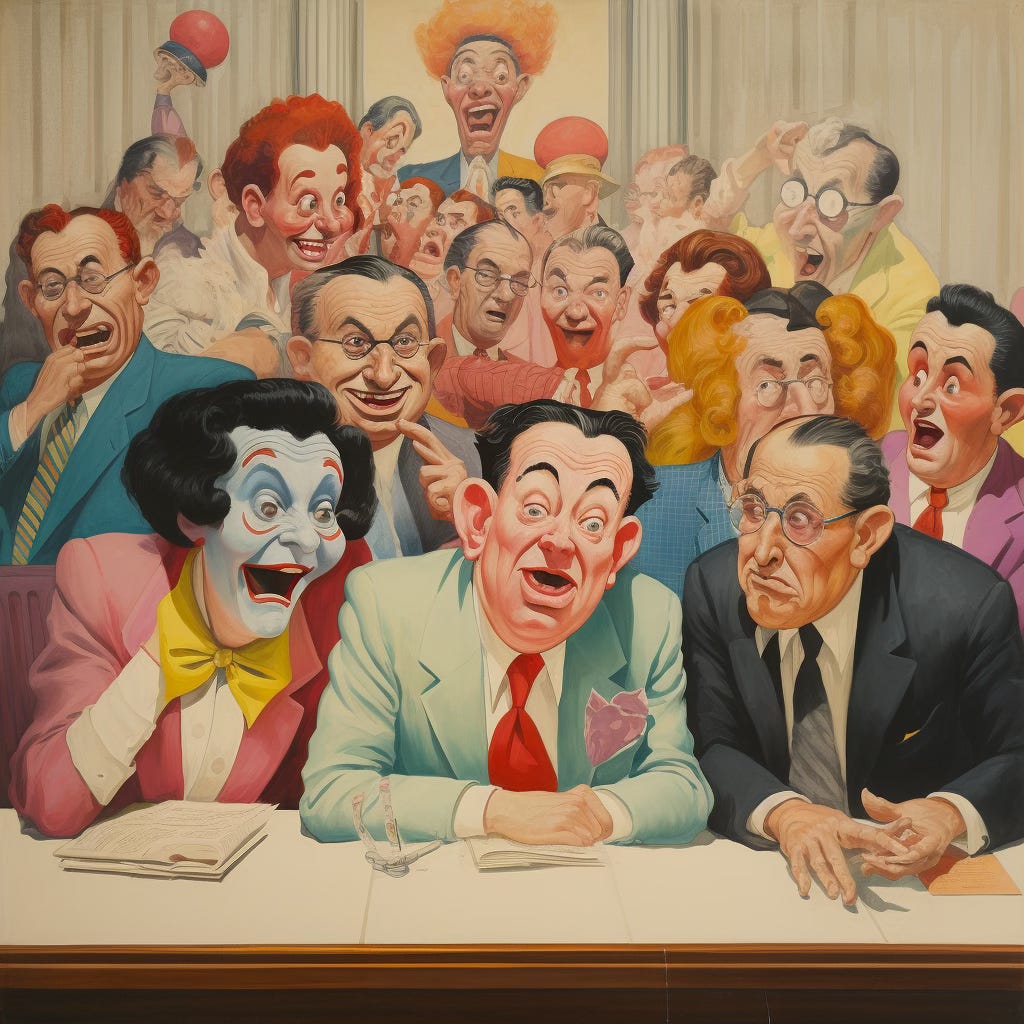
In short, being a member of Congress is a difficult and increasingly miserable job. In some ways, it’s remarkable that anybody still wants to do it.
So, exactly who wants to do it? Yeah, about that…
So Who Runs? People who like partisan warfare
So, who among us wants to run for Congress? Presumably, individuals who expect to find the job rewarding. And what kinds of people would find the current Congress a rewarding place to be?
Increasingly, it’s people who see Congress as a place to build a personal brand by being loud and obnoxious and very online. It’s less and less a place for serious policy work anymore. This problem is more acute among Republicans.
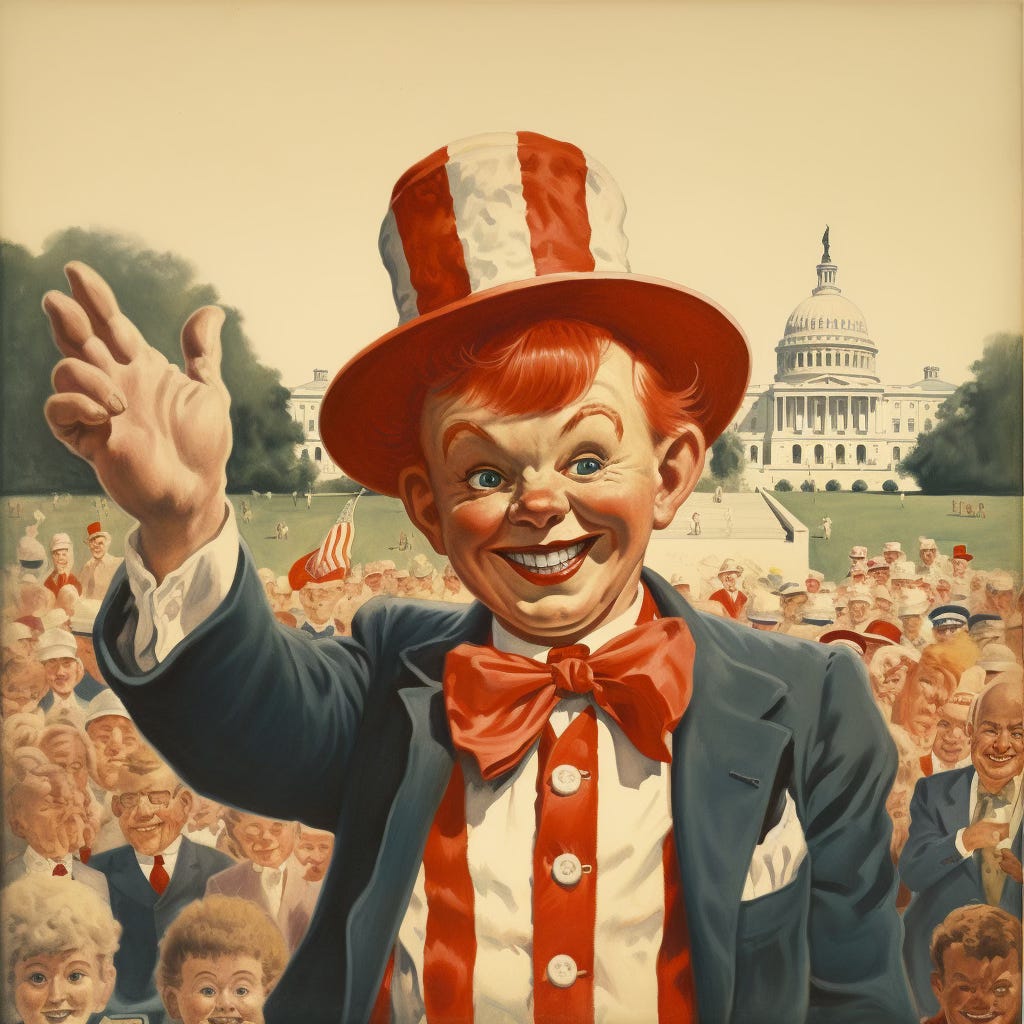
Here, the sociology and culture of the institution becomes particularly important. It’s a reinforcing dynamic. The people shape the institution, but the institution also shapes the people, attracting some and repelling others.
Some personalities thrive in a divisive and combative Congress. Others simply leave. Some love the drama. Others have better things to do.
But ultimately, Congress is made out of people. So it matters who shows up.
Of course, there are still many top-notch members of Congress who continue to run and win, and really do work hard on behalf of their constituents and the country. And despite all the clowning-around, Congress still does manage to navigate some hard and serious compromise legislation. Political scientist Frances E. Lee has lately argued that perhaps we are not giving Congress enough credit for what it does accomplish under such difficult circumstances.
But earnest and thoughtful representatives increasingly struggle to navigate the contentious political environment. Finding equally committed successors is equally challenging.
Two decades ago, political scientists began documenting how new members of Congress differed from retiring members, particularly post-1994. New members were more partisan, less compromise-oriented.
In 2006, Sean Theriault concluded that about two-thirds of congressional polarization was because of member replacement. At the time, much of the shift involved moderate Southern Democrats leaving, and very conservative Republicans replacing them.
Thus, Theriault found some asymmetry in the partisan patterns: “Republicans in both chambers are polarizing more quickly than Democrats. If the Democratic senators have taken one step toward their ideological home, House Democrats have taken two steps, Senate Republicans three steps and House Republicans four steps.”
Below, I’ve taken a rough cut at updating this pattern. Starting with the Congress seated in 2001, I’ve plotted DW-Nominate voting scores on the x-axis, and number of terms served on the y-axis, for all House members who served in that Congress. The scores go from -1 (most liberal) to 1 (most conservative), assuming a one-dimensional liberal-conservative axis based on voting patterns. Though this measure is imperfect, it is a good enough proxy to track the growing divisiveness of voting.
Here’s how to read these charts. Each dot reflects a representative. The heavy lines reflect the apparent relationship between congressional experience and voting scores. In 2001 and 2003, centrists in both parties are the most experienced. If you squint closely at 2001 and 2003, it almost looks like long-serving Democrats and long-serving Republicans are shaking hands in the middle.
Then, from 2005 to 2017, we see very different patterns among Democrats and Republicans. Among Democrats, the most liberal members tend to be more experienced, whereas the newest members vote more moderately (closer to the center). Among Republicans, the most moderate members are the most experienced. The newer members tend to be more conservative.
However, in the most recent Congresses, Democrats and Republicans have become more similar. Now both parties demonstrate the same pattern, with congressional tenure and voting ideology following a U-shaped curve, with both moderates and extremists most common among the new members.
One important piece of this transformation is that Republicans, on average, have shorter careers in Congress than Democrats. Thus turnover among Republicans is faster. This has been the case for a while, though the gaps are wider now. (This may have something to do with Democrats believing more in the value of federal government. It also may reflect more Democrats inhabiting entirely safe districts, where they are never challenged, even in primary elections.)
In a recent Substack, Michael Podhorzer observed the “churn” among the Republican Congressional delegation is the highest it’s been since the 1940s. (He defines “churn” as the number of freshmen elected over a seven-cycle time span.) Particularly since 2010, Republicans in Congress are much more likely to come from districts dominated by white Evangelical Christians. These are places where conservative church networks dominate politics. These networks shape who runs for Congress.
In the past, many Republicans in Congress were prominent local business leaders with some local public service experience. Today’s Republican electeds have much thinner leadership and service resumes. As Podhorzer noted, “Compared to the last caucus of the Gingrich majority, the 2020 Republican Caucus has far less prior experience in business, law, or public service – fields that tend to be good precursors to serving in Congress.”
Hear Michael Podhorzer talk about his post and more of his writing on a recent episode of Politics in Question, the podcast I co-host
Who Doesn’t Run? Reasonable people who don’t want to brave the fecal hurricane.
Political analysis focuses on who shows up in Washington. We attend less to the people who might have run, but didn’t. What are the alternative Congresses we might have had if different people opted in?

Here, I want to draw some attention to an important 2017 book, Opting Out of Congress: Partisan Polarization and the Decline of Moderate Candidates, by the political scientist Daniele Thomsen.
Thomsen’s argument is that political moderates “opt out” because they imagine what life for them might be as a moderate Republican or a moderate Democrat in Congress. And that life looks pretty difficult: isolated in their own caucus, with no path to committee leadership or significant policy influence.
Thomsen calls this idea “party fit.” Basically, individuals are much more likely to run for congress if they see themselves fitting in with a party in Congress. If they don’t see a fit, most will not bother to run.
Thomsen conducted wide-ranging interviews in 2013, mostly with moderate members. Here’s a paragraph from her book that strings together some insightful quotes.
Many of these members, particularly moderate Republicans, spoke at length about how the job itself became “frustrating,” “unsatisfying,” and “increasingly confrontational” (14 January 2013; 25 January 2013). A moderate Democrat who retired added that it was “no longer as much fun” (25 January 2013). One Republican groaned, “Everything was a fight,” and likened his experiences to “those clown things you punch” (22 January 2013). These day-to-day struggles did wear on members: “Every day going in and being the odd man out . . . It’s grueling; it’s exhausting; it’s corrosive” (22 January 2013). Another said, “It’s not fun anymore. Your job is not supposed to be fun like going to an amusement park, but it should be pleasant. Members are saying it’s not pleasant anymore. Legislators now have such intense feelings. You’re viewed like a heretic by people who have a different point of view than you. That’s not very good, not very healthy for the republic” (14 January 2013).” (Thomsen, 2017, p. 42)
Like others, Thomsen found significant partisan asymmetry. Moderate Democrats grumbled, but they didn’t report fighting with their colleagues or being denied leadership or committee posts. Moderate Republicans had a much harder time. Most reported being denied committee positions, being demoted to worse committees, and frequently being harassed by their colleagues.
And it was enough to push many moderate Republicans to the exits.
Andrew B. Hall’s excellent 2019 book, Who Wants to Run?: How the Devaluing of Political Office Drives Polarization, complements and supports Thomsen’s analysis. Hall also finds that polarization discourages moderates from running for office. Add in all the difficulties described above (the costs of campaigning, the exhausting, often thankless work as a reward for winning), and you’ve got a formula for weeding out problem solvers and attracting conflict-seekers. Or, in Hall’s more dispassionate academic phrasing “when costs of running are high or benefits of holding office are low, more moderate candidates are disproportionately less likely to run.”
In short, Congress changes as the people who serve in Congress change. The parties in Congress change as the people who serve in them change. Most people, especially very social people, prefer being around other people like them. Most people conform to fit in with the other people who are like them. Congress, after all, is just people.
The dynamic here is similar to neighborhood change. Think about how neighborhood gentrification works. A few adventurous artists move into a cheap neighborhood and start fixing it up. They attract others like them. Housing costs go up as demand increases, changing who can afford to live in the neighborhood. New restaurants open up. Real estate development companies invest in projects. Older residents can’t afford to live there anymore, or even if they own their own home, don’t feel like it’s home anymore.
Or consider the reserve process, disinvestment. Rich people leave. Declining housing values attract less affluent residents, who do less upkeep on their homes. Crime increases. Those who can afford to leave, get out. By selling their homes at a loss, they further devalue the neighborhood.
It doesn’t happen at once. But over a series of years, different people come in, and the character of a neighborhood changes, and different people get attracted to living there.
Here, we should think about the congressional parties as adjacent neighborhoods. Distinct, but connected to each other. As the Congressional parties change, different people feel at home in them.
To make Congress a welcoming place for moderates, we need some new political parties. New moderate parties.
If we take the Who Wants to Run? question seriously, it has important implications for how we think about reform.
For example, many reforms put significant emphasis on primary reform, on the theory that primary elections have allowed extremes to take over from the moderates through low-turnout elections.
However, since the bird has flown from that nest, the problem is now different. A would-be moderate Republican candidate CAN NOT look at the current Republican party in Congress and think: Gee, I’d really like to be a Congressional Republican. I’d really feel at home in the current House GOP.
Instead, such a reasonable person is likely to think: Wow, maybe I can win an election. But ho boy. What the hell am I getting myself and my family into. I’ll be surrounded by people I disagree with, and constantly harassed if I don’t toe the party line. I have no prospects for meaningful advancement. Ummmm…. No thanks.
The core issue: there is no critical mass of moderates, particularly on the center-right. The Republican Party has made them feel very unwelcome in Congress. And it keeps getting worse
This is why I keep coming back to the urgent need for more political parties, and better political parties. We need some new parties to provide a welcoming home to new members of Congress, particularly center-right moderates. And to get there, we’ll need some electoral system changes to make more parties viable. I favor fusion voting and proportional representation.
You can, of course, read all about the reasons why we need new parties in my recent white paper, More Parties, Better Parties: The Case for Pro-Parties Democracy Reform. NOW AVAILABLE AS AN AUDIO BOOK (recorded by me)
Here’s the bottom line: A dysfunctional Congress that drives away experience and talent, and instead attracts amateurs geared up for performative partisan warfare, is a fundamental threat to democracy in America. We need to do better.
The dynamic keeps getting worse. It’s a reinforcing doom loop. The people who want to run for Congress don’t mind the reality-show drama. Many of them actually like it. And more and more, they drive the people who care about policy away.
At some point soon, though, we really do need to break this doom loop.

Go ahead, press all the buttons. You might find another clown in there somewhere.





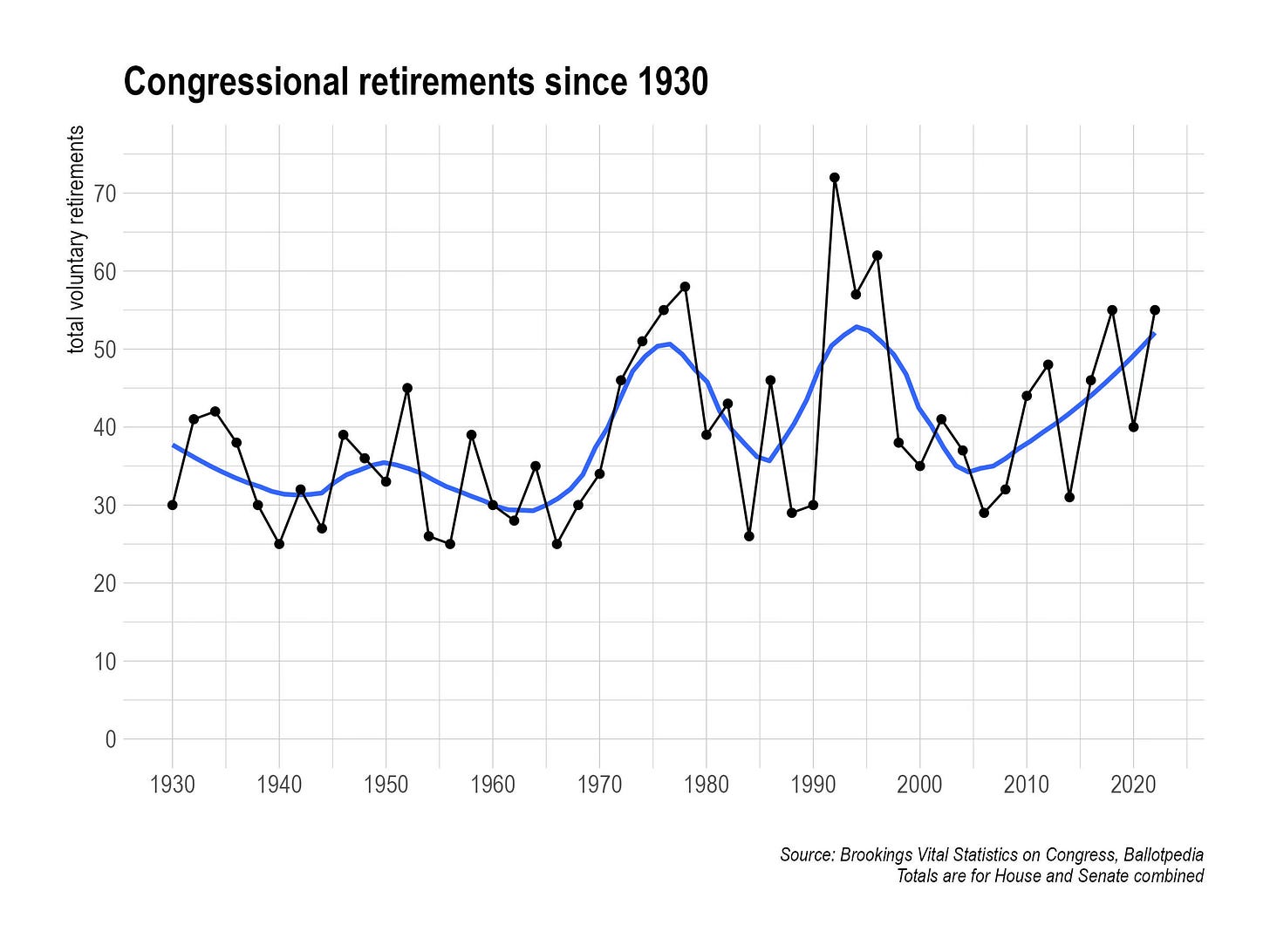
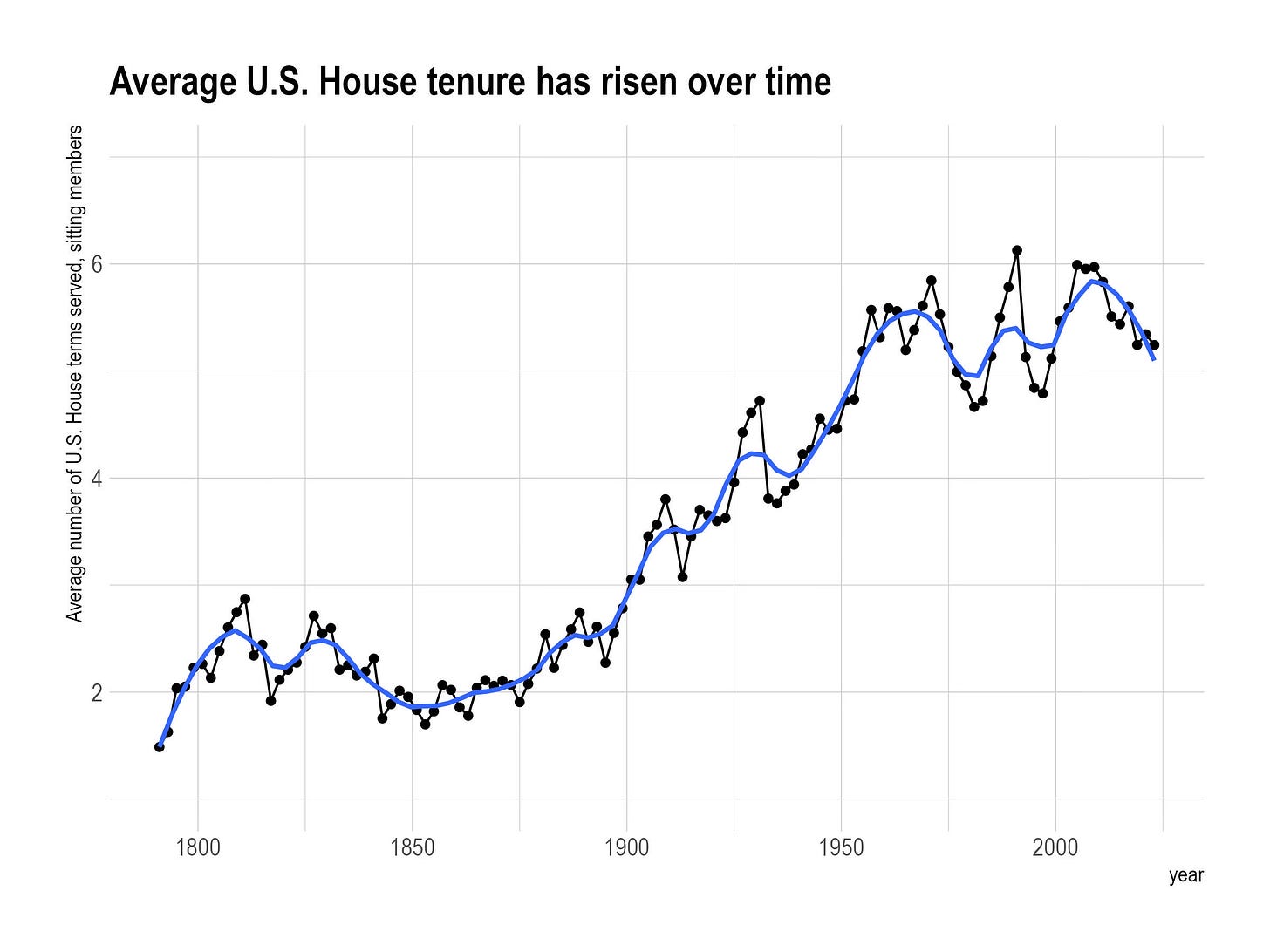
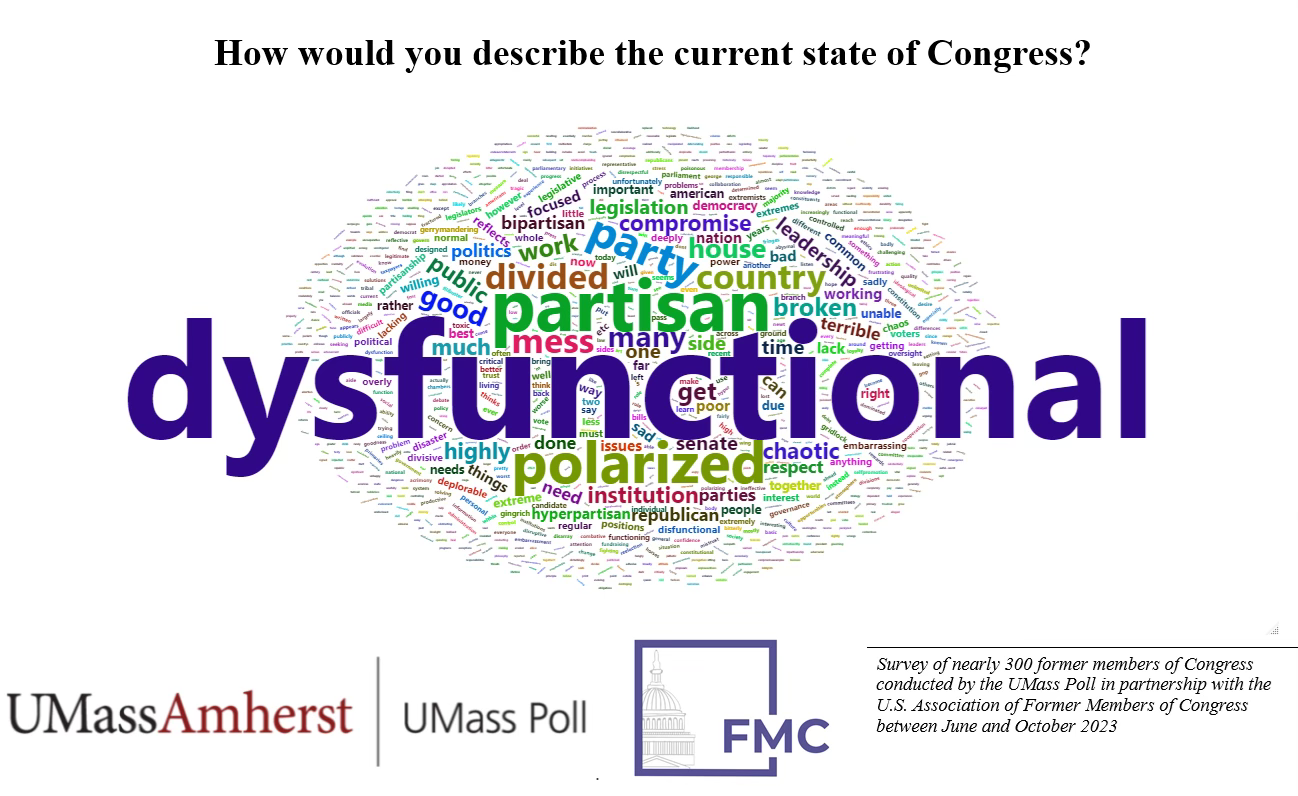
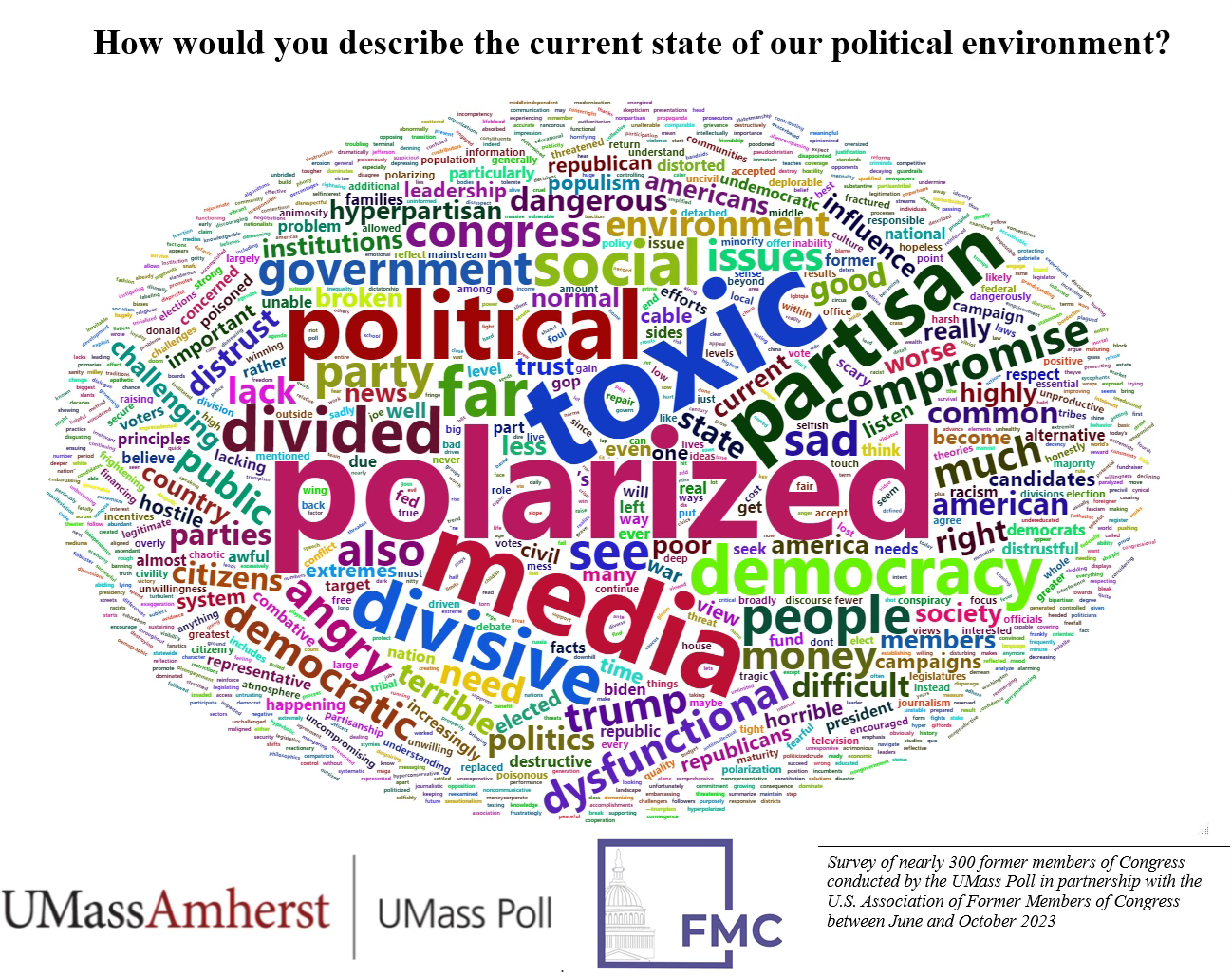
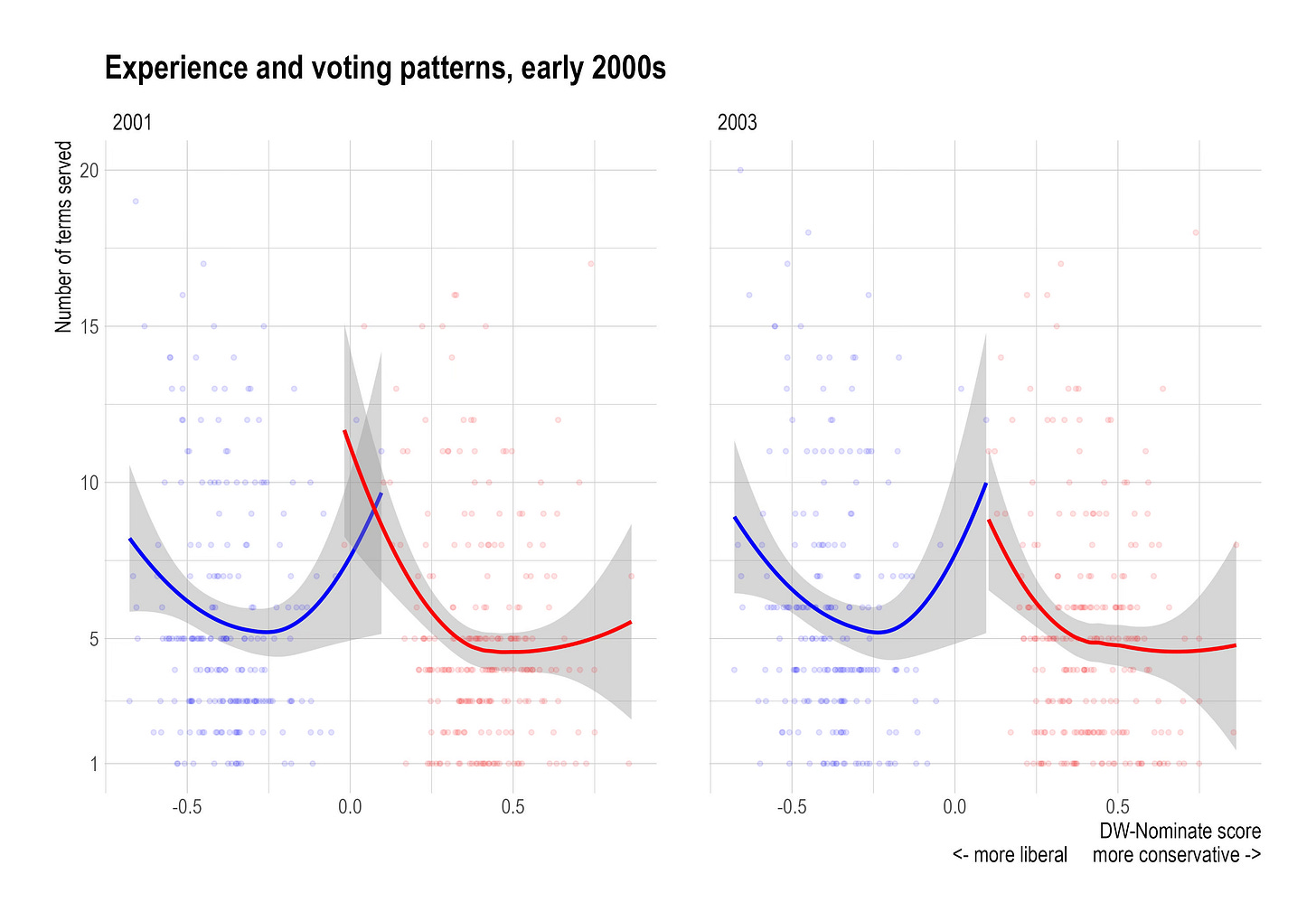
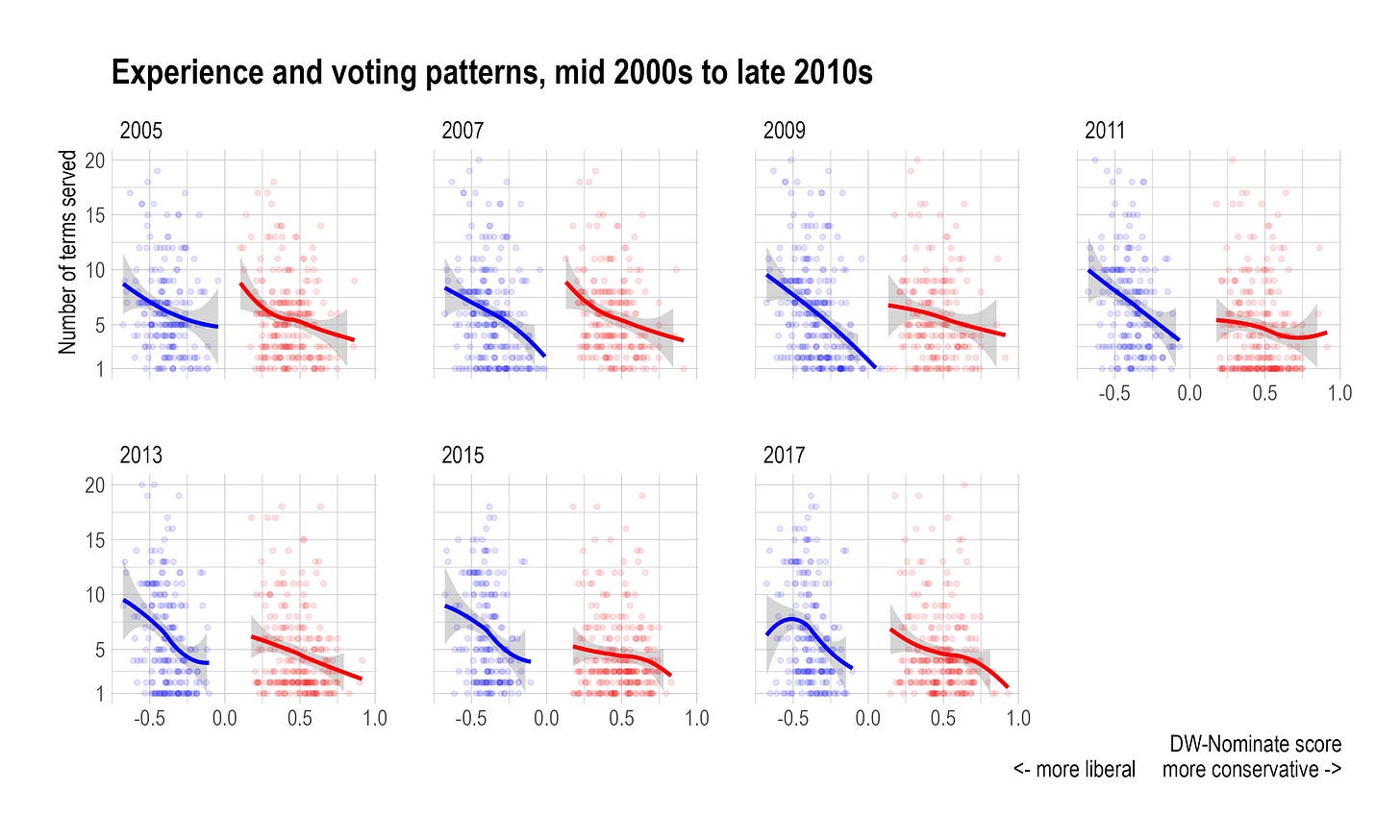
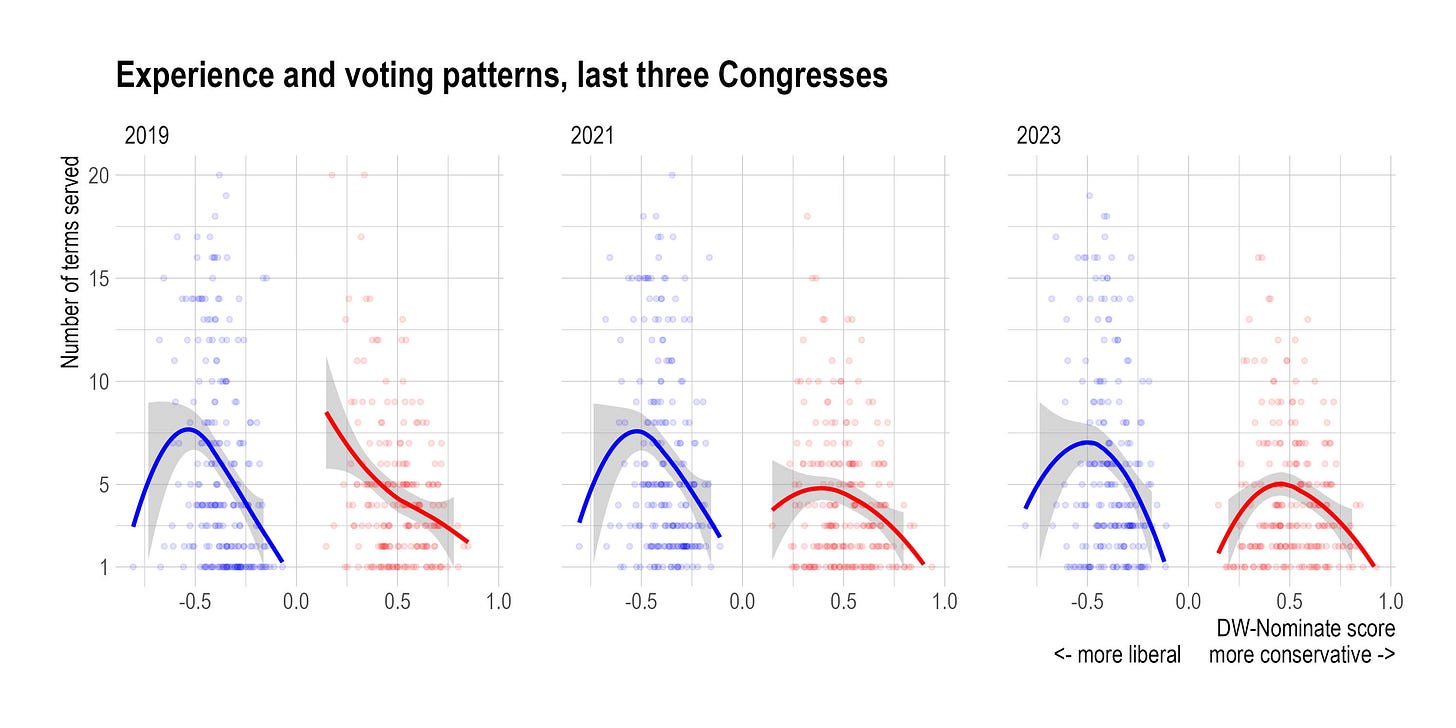

Need more candidates at all levels of government. Recommend someone you already know & trust to run for local elected or appointed office on joinstump.com
Hi Lee, interesting piece, with your usual mix of data and well-written cleverness. However, in reading this, it struck me that if you stripped out the parts in the middle where you present the blizzard of data, there’s not much difference between your article and that of a right-winger saying “government is bad,” “the system is corrupt”, and “that’s why we need less government.” It’s always been one of the ironies of our political dilemma right now – one of our nations many Catch-22’s – that the Republicans win votes when government is seen as inept, ineffectual, sucking up taxes out of our pockets to pay for “those programs”, by portraying themselves as the party of "less government" even as the GOP tries to make the government more inept, ineffectual by cutting (or threatening to cut) the programs that actually help people.
So while your article was entertaining to read, I wonder if it doesn’t add to the steady drumbeat of negative information that tends to undermine the appreciation of government by Americans.
The reason why this is important – here’s the takeaway for you, as a proponent of reforms like proportional representation and fusion – is because if Americans don’t value government, they aren’t likely to care very much about the rules that elect government. And they aren’t going to value democracy. I feel that your article may inadvertently contribute to that spiraling-down dilemma. It's something to think about, I certainly have had to do so over my 30 yrs of advocacy for PR.
An alternative approach would be something like what another political scientist and PR supporter, Douglas Amy, pursued. Doug recognized that Americans are not going to support PR, and especially not support MORE parties or multi-party government, if they don’t value government and democracy (much less political parties). So Doug began writing about, and launched a website called “Government Is Good.” Here is a link to it, I encourage you to check it out https://governmentisgood.com/ .
I guess it’s a question of whether you think you can SCARE Americans into PR, or whether you are going to have to respect their intelligence and engage in the long term work of helping them understand why it would actually be good for them. It’s another fork in the road along the journey of political reform. All the best
Steven
www.Steven-Hill.com
DemocracySOS
https://democracysos.substack.com/